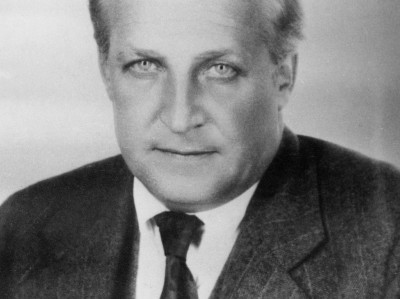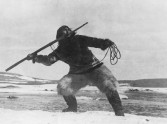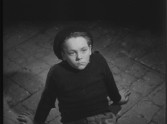Audio transcription
John Quackenbush 0:00
February [21], 2015. The Harvard Film Archive screened Elephant Boy. This is the audio recording of the introduction by HFA film programmer David Pendleton and filmmaker Sami van Ingen.
David Pendleton 0:13
… in any case, I leave you now, in the capable hands of Mr. Sami– Oh, I should also, let me say, for those of you who weren't here last night, I should say that Sami is also a filmmaker and an artist in his own right, and a professor. Some of his films were screened here in Cambridge, courtesy of Balagan, a couple of years ago. He does a lot of installation work, and film performance, found footage films, documentaries, experimental work, you name it, based in Helsinki. Now I leave you with Sami van Ingen.
[APPLAUSE]
Sami van Ingen 0:52
Thanks. Well, welcome, everybody, and thanks for coming through this challenging weather and... I'm a Finn, and even for me, it's quite interesting to walk around your town, with all the snow, piles of snow everywhere. So it's pretty funky. When David asked me to possibly introduce this film, first of all, I'm not an expert on this film at all. And, it's also not my favorite film, for many reasons. It's a very complex, complicated film to watch, in many ways. And, then I kind of thought I'll try. And now let's see what happens. And, I actually had to watch it twice this morning, just to figure out what's there, because it's kind of a very confusing film.
And, I was kind of trying to figure out how to kind of articulate it, and, in a way, I kind of think that it's like a black-and-white film. It's like a yin and yang film. It has two directors, two different worlds, and then two different modes of production, as well. And, that came from the fact that Flaherty's method of working was very much, it was a group process where both Frances and Bob and then his brother, David, and also, their kids, Barbara, who was the oldest daughter, was there as well. And they all worked, and they actually came to India before everybody else,and pre-planned, and found people, and did lots of things, and sorted things out, and it wasn't like this, the director has a clear– like, Korda obviously had a totally different way of making films. He was a director, and he told people what to do, and they had a script, and so on. But the Flahertys' process was very organic, very complicated and really amateurish, from the point of view of professional filmmaking. But at the same time, it had proven itself as a very good process with Nanook, and I think also with Moana. So there were these things.
There's a kind of a nice book, if you ever have the chance to read, called Elephant Dance, that Frances wrote. It was published in ‘37, where she tells how they came with Barbara, my grandmother, to Bombay, arrived in Bombay. And then there was– Bombay is like 600 kilometers from Mysore where they filmed this film, and in those days that was a long way. And so they arrived in Bombay in the harbor with a steamship, I guess? I don't know what, how they did those days. And, there's a train waiting for them. The Maharaja of Mysore has sent his private train to Bombay, like [halfway on] the other side of the country, to pick these two people up. And they go down with the train to Mysore, and, it's quite an extraordinary, kind of, one more Flaherty myth again, like they love these things. And, then they arrive, and there's this old palace that is now a hotel, but the Maharaja had built a palace for one of his concubines. And for some reason, the concubine wasn't there, and it was, like, derelict. So the Flahertys got this palace that was cleaned up. And then all the elephants were brought in front of the palace, and then they started making this film. So the whole thing was just like, really pretty, picturesque. But at the same time, they didn't know where they were, they didn't know the language, didn't know the culture. It was very complicated. Anyway, that's a nice read, if you ever get a chance to read it.
And I think that this is ‘35 when they started making the film. And if you remember, Gandhi's Salt March was in 1930. So there [were] things happening there. It was not just like these picturesque people, walking around the paddy fields, and elephants in the horizon. It was actually quite an interesting, complicated historical moment in India, but we kind of, somehow, don't get any of that in this film. And there's so many weird things happening, at the same time. The actors, as you can see, who acting these Indian main characters in the film, except for the little boy, they're all British actors painted, and they have a turban in their head, and so on. And, and it's a kind of a wild film, I just, I just don't know how else to put it.
And, I don't know how... It wasn't a great success. But I can’t you know, think it could be, because it doesn't carry. It has these beautiful shots of the elephants, and then it has this weird story, that's actually originally quite interesting. And it's turned into this weird stage play that's been filmed partly in a studio in England.
But the palace is still there. It's a hotel now. And next to it, there's a big studio, the Mysore film studios. It was built during this production, so something stayed behind, as well, even if the film is not very well known in India at all. And then, then maybe the good– I mean, I really struggle today to find anything really positive to say about the film. But for me personally, the good thing about the film is that because of this film, my grandmother—she was eighteen when she arrived—she then met my grandfather, who was a local Dutch hunter, and she stayed behind, and brought up a family, and that's why I'm here. So at least something positive happened. But, and I can’t say that the elephants weren't harmed in the shooting, or anything. I don't know. But, yeah. I guess we just have to watch it. I don't know what else to say. I mean, I tried, right? [LAUGHING] Okay. Thank you very much.
[LAUGHTER AND APPLAUSE]
© Harvard Film Archive











